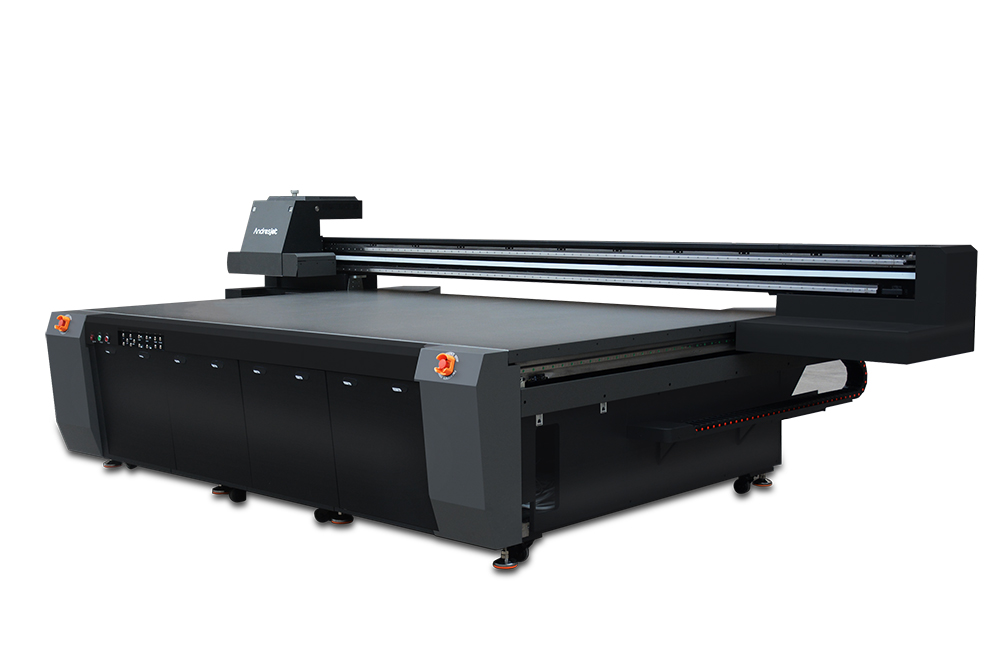What Is the Future of UV Flatbed Printing Technology?
What Is the Future of UV Flatbed Printing Technology?
In the realm of digital printing, UV flatbed printing technology has emerged as a game-changer, revolutionizing the way we produce high-quality, vibrant prints on a wide array of substrates. This technology, which utilizes ultraviolet (UV) light to cure ink instantly, offers numerous advantages over traditional printing methods, including faster production times, improved print quality, and the ability to print on diverse materials. As we look ahead, the future of UV flatbed printing technology promises even greater advancements, driven by ongoing innovations in ink chemistry, printhead technology, software capabilities, and market demands for versatility and efficiency.

Advancements in Ink Chemistry
One of the key areas where UV flatbed printing technology is poised for significant progress is in ink chemistry. Traditional UV inks have been praised for their ability to cure instantly under UV light, enabling fast turnaround times and reduced risk of ink smudging or bleeding. However, ongoing research and development are focused on creating inks that are not only faster to cure but also more environmentally friendly, with lower volatile organic compound (VOC) emissions and increased sustainability.
Future UV inks are expected to be even more versatile, allowing for greater color gamut and improved adhesion to various surfaces without compromising on durability. This includes the development of inks that can adhere to heat-sensitive materials like plastics and foils without causing warping or melting, expanding the range of applications for UV flatbed printers.
Evolution of Printhead Technology
Another crucial aspect of UV flatbed printing technology that is set to transform is printhead technology. Printheads are the components responsible for depositing ink onto the substrate, and advancements in this area can significantly impact print speed, resolution, and overall print quality.
Future printheads are anticipated to have higher resolutions, enabling even finer detail and smoother gradients in prints. Additionally, advancements in printhead design could lead to increased nozzle density, allowing for faster printing speeds without compromising on quality. Some manufacturers are also exploring the use of variable dot technology, which would enable printers to adjust the size of ink droplets in real-time, further enhancing print quality and ink efficiency.
Software and Workflow Optimizations
The software that drives UV flatbed printers is also a key area of development. As the technology matures, we can expect to see even more sophisticated color management systems that ensure accurate and consistent color reproduction across different materials and print jobs. These systems will leverage advanced algorithms to automatically adjust ink deposition based on the specific properties of the substrate, ensuring optimal print quality every time.
Workflow optimizations will also play a crucial role in shaping the future of UV flatbed printing. Manufacturers are working on developing user-friendly interfaces that simplify the process of setting up and managing print jobs, reducing the need for extensive operator training. Furthermore, integrations with cloud-based platforms and IoT (Internet of Things) technologies will enable remote monitoring and control of printers, facilitating predictive maintenance and real-time adjustments to optimize production efficiency.
Market Demands and Applications
Market demands are a significant driver of innovation in UV flatbed printing technology. As businesses seek more versatile and efficient printing solutions, manufacturers are responding by developing machines that can handle a broader range of substrates and applications. This includes not only traditional materials like paper and cardboard but also rigid substrates such as glass, metal, wood, and even textiles.
The packaging industry, in particular, is expected to be a major beneficiary of UV flatbed printing advancements. The ability to print directly on various packaging materials, including flexible films, will enable shorter production cycles, reduced inventory costs, and more personalized packaging designs. UV flatbed printers could also play a pivotal role in the growing trend of on-demand and just-in-time manufacturing, where the ability to quickly produce high-quality prints in small batches is crucial.
Environmental Considerations
Lastly, the future of UV flatbed printing technology will be shaped by environmental considerations. As businesses and consumers become more conscious of their carbon footprint, manufacturers are investing in developing UV printing solutions that minimize waste and energy consumption. This includes the adoption of LED-based UV curing systems, which consume less energy and generate less heat than traditional mercury-based UV lamps.
Moreover, the development of inks and coatings that are recyclable or biodegradable will be crucial in making UV flatbed printing a more sustainable technology. Manufacturers are already exploring the use of bio-based inks and developing processes that reduce ink waste during printing, ensuring that UV flatbed printing remains at the forefront of environmentally responsible manufacturing practices.
Conclusion
In conclusion, the future of UV flatbed printing technology is bright, with advancements in ink chemistry, printhead technology, software capabilities, and market-driven innovations all contributing to its continued growth and evolution. As this technology becomes more versatile, efficient, and environmentally friendly, it will continue to disrupt traditional printing methods and open up new possibilities for businesses across various industries.
UV flatbed printing is poised to become the go-to solution for those seeking high-quality, fast, and customizable printing on a wide range of substrates. Whether it’s for packaging, signage, promotional materials, or artistic applications, the ongoing advancements in UV flatbed printing technology promise to deliver even greater value and versatility in the coming years. As such, businesses and manufacturers that embrace these advancements will be well-positioned to capitalize on the growing demand for efficient, high-quality, and sustainable printing solutions.
